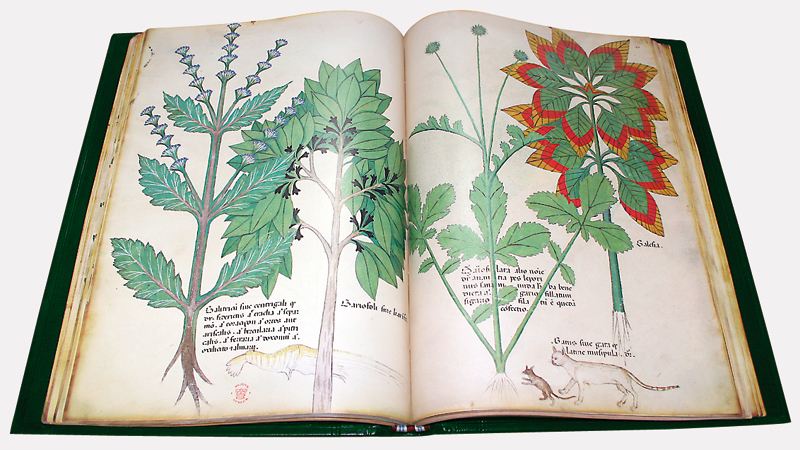First Herbal with Original Pictures for 1000 Years.

1440: The Tractatus de Herbis is published.
Until the 15th C , with its invention of the printing press and the subsequent explosion of Elizabethan era herbals, there were basically two main herbals (at least, illustrated ones) doing the rounds in the ancient world: Dioscorides’ Materia Medica, which was the main body of work in both the Greek and Arabic traditions and, in the West at least, the Herbarius of Apuleius Platonicus, which was produced somewhere around the 3rd - 4th C. These were the ‘big guns’ on any respectable herbalist’s bookshelf even though one was essentially a copy of the other, along with pretty much every other herbal available. Then along came the Tractatus de Herbis.
There is a single significant reason why this manuscript is considered to be such a remarkable herbal: its illustrations. To understand why, let's backtrack a little. Back to ancient Greece, back to before even the great Dioscorides produced his magnificent work. Back to around 350 BCE. The time of Aristotle, Plato and Theophrastus.
This was the time when the very earliest herbals that we know about were produced. None of them have survived and today we know about them only through references in later works. They are thus evocatively known as 'ghost works'. One thing that we do know is that they were illustrated and their illustrations were incorporated (i.e. copied), into the great herbals that do survive; Dioscorides’ work being the main example. What was remarkable about them is that these illustrations were based on observations of the actual plants themselves. Amazing eh?
The bizarre thing is that once these pictures had been produced, common consensus seemed to be that that was that; job done. The same illustrations were then just copied from manuscript to manuscript down the ages - for almost a thousand years. Not surprisingly, many became so derivative that the plants they were supposed to be illustrating were completely unrecognisable. That nobody really minded this is evidenced by the fact that every now and again, someone thought that the, by now highly abstract and botanically useless, pictures were so beautiful they would make a nice book just on their own without all of that distracting writing and herbal lore.
It was not until the 14thC (a thousand years after the original illustrations), that someone thought that perhaps it might be a good idea when writing a herbal to put in illustrations which were not 1000 year old copies of copies of copies but instead were pictures of the actual plants, so that a person might be able to use the pictures to identify the plants. Thus was born the ‘Tractatus de Herbis’.
It is a beautifully illustrated book specifically designed to show the different plants used in medicine as accurately as possible so that practitioners of different nationalities, languages and reading skills could properly identify the right plant.
This was clearly a far too new-fangled idea because it did not really catch on for another two hundred years, when the production of modern herbals and the development of a more ‘modern’ botanical-medical attitude was in full swing. The pictures from this herbal did however get copied themselves and made into yet another picture book; without any of text to get in the way.
It now resides in the British Library.
A number of images can be seen here
Read more on the iPad book here: http://tinyurl.com/wildarumipad